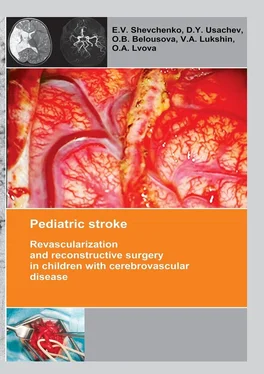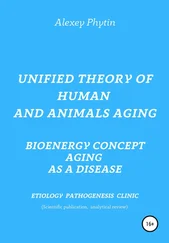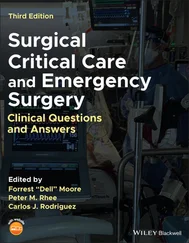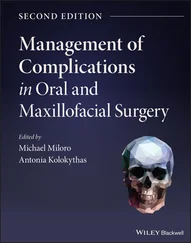2. Pediatric stroke classifications
As already stated above, the ratio between hemorrhagic and ischemic strokes in children essentially differs from that in an adult age group. There is no unanimous opinion on the ratio between these variants in children. Apparently, the prevalence of an ischemic or a hemorrhagic ACVD variant in every new survey is associated with the specialization profile and medical care type in a healthcare facility.
Also, there are discrepancies in determination of a stroke variant in a child. For instance, the national research community failed to agree whether periventricular ischemia as well as intraventricular and subarachnoid hemorrhages can, by way of a morphological substrate of perinatal impairment of infants’ nervous systems, be considered to be equivalents of ischemic or hemorrhagic ACVDs (by analogy with adult patients). Authors of foreign clinical manuals on diagnostics and treatment of strokes say that they excluded infants with such lesions from analyzed literature sources. Based on provided epidemiological indicators, it also becomes evident that the researchers did not include patients with perinatal encephalopathy into their analysis scope [183; 107; 146; 220; 280].
It is well known that an ischemic stroke is broken up into the following categories:
• complete stroke – a cerebrovascular disease, which results in the formation of a sustained neurologic deficiency; ischemic lesions of cerebral tissue are detected by spiral computed tomography (CT) and magnetic resonance imaging (MRI) of brain;
• minor stroke – an acute development of a neurologic deficiency with subsequent complete regression within 2—3 weeks; small ischemic lesions may be detected by CT and MRI of brain;
• evolving stroke or stroke in evolution – an acute development of cerebral ischemia accompanied by a gradual growth of the neurologic deficiency during several days.
A separate nosological form of ACVD is transitory ischemic attacks(TIAs), which are characterized by a sudden development of a neurologic or retinal deficiency of ischemic nature, which is related to a specific artery territory and which regresses completely within 24 hours. TIAs occur considerably more frequently than strokes. Regarding their incidence rate, TIAs are subdivided into rare (1—2 times per year), mid-frequent (3—6 times per year) and frequent (once per month or more frequently) [17]. TIAs may be a manifestation of a chronic cerebral ischemia (insufficiency) with a high risk of subsequent development of a massive IS. Thus, a TIA may be considered an antecedent of IS.
The international terminology used for describing a pediatric stroke includes the following notions:
1. fetal (prenatal, intra-uterine) stroke – before the child birth;
2. perinatal stroke (when the disease develops during the period from the 28-th gestational week till the end of the first month following the birth);
3. pediatric stroke – at the age of 1 month following the birth until 18 years old [37; 148].
Presently, in children it is proposed to single out the following pathogenetic types of an ischemic stroke: hemodynamic, metabolic, embolic and occlusive.
There is no generally accepted and acknowledged by all specialists classification of CVDs in children. Above, we have presented a classification, which considers the age, when the stroke onset occurred.
Regarding the periodization of the disease itself, national specialists prefer to rely on the time frames formed in adult practice.
Groups of experts attempt to propose the pathogenetic variants of a pediatric stroke classification, yet they fail to end the discussions. For instance, they propose an anatomical classification named CASCADE (Childhood AIS Standardized Classification and Diagnostic Evaluation), which considers the localization and/or source of thrombosis/embolism of brain arteries (minor cerebral arteries, major cerebral arteries, aorta and cervical arteries, heart) [57]. The development of CASCADE classification was aimed at creating an analog of TOAST (Trial of ORG 10172 in Acute Stroke Treatment) accepted in adult practice, which was practically achieved [76]. However, the criteria specified in it can be hardly met or, in fact, cannot be met at all: e.g., they imply a histological acknowledgement of changes in cerebral vessels. Another essential drawback of this classification is deemed to be ignoring the embolic variant of IS and thrombophilic states in it.
3. Aetiopathogenesis and risks
A pediatric stroke is heterogeneous in aetiopathogenesis. If in adults strokes are associated most frequently with atherosclerosis of brachiocephalic arteries (BCA) [26; 27], the etiology of strokes in children is diverse and complex [40]. In literature there is a quite exhaustive list of diseases and syndromes, which are fraught with a risk of cerebral ischemia in childhood, adolescence and youth. According to data of the American Heart Association & American Stroke Association (2012), half of all children, who had suffered a stroke, had risks [219].
Complexity and diversity of etiology imply a wide circle of specialists, who must keep an alert eye on strokes in their routine practice.
Heart diseases (congenital and acquired) present one of the most significant risks equal to about 20—30% of the causes of ischemic strokes in childhood [161]. A combination of left-heart embolisms (or paradoxical embolism in right-to-left cardiac shunt) and cardiac decompensation is important in pathogenesis of cardioembolic variant of an ischemic stroke [1; 7; 22; 52]. There is a description of cases of paradoxical embolism into the cerebral vessels of children and young people in the background of an atrial septal defect, open foramen ovale, in cases of arteriovenous malformations of pulmonary vessels and neurocutaneous syndromes [280]. While this problem was in focus, the attention was again attracted to minor cardiac abnormalities. Regarding patients with vague etiology of stroke, it is, primarily, recommended to rule out sources of hidden or paradoxical embolism as an open foramen ovale, a mitral valve prolapse and an atrial septal aneurysm [1; 52; 56; 38]. The literature data state that imaging reveals «silent» brain infarctions in 25% of patients with mitral stenosis. Also, clinically «silent» ischemic lesions of brain tissue are found in 20% of newborns with heart diseases on a pre-surgery stage and in 17.4% – on a post-surgery stage [63; 181; 221]. Presently, several studies were held with the attempted prognostication of strokes in infants with congenital heart diseases. A significant role of duration and an intensity of hypoxia in newborns, resuscitation procedures, prematurity and duration of waiting for surgical intervention were indicated as ACVD risks at pre-surgery and post-surgery stages [62; 112; 161; 181; 183; 210].
Cardiac arrhythmias are considered to be a very rare cause of strokes in childhood and youth, as opposed to adults. Nevertheless, it should be kept in mind regarding children with hyperthyreosis, rheumatic heart diseases, after surgical interventions and in the structure of Kearns-Sayre syndrome.
Cardiac myopathy as a manifestation of systemic diseases occurs in congenital myopathies (Duchenne, Becker, Emery-Dreifuss, etc.), Friedrich’s ataxia, mitochondrial diseases. With this pathology, both embologenic and hemodynamic variants of an ischemic stroke are possible. In some cases, a myocardial infarction and a stroke may develop simultaneously, which points at the similarity of pathogenetic processes leading to inadequate perfusion [7].
Hypercoagulation states are presently considered to be the most common causes of ischemic strokes in childhood – their contribution reaches 87% [3; 16; 138; 144; 170; 265]. However, a universally acknowledged screening protocol for thrombophilic state in a child with CVD has not been developed yet, and some researchers dispute the role of multigenic thrombophilias as risks of strokes and TIAs in children [82; 121; 142; 184; 194; 282].
Читать дальше












